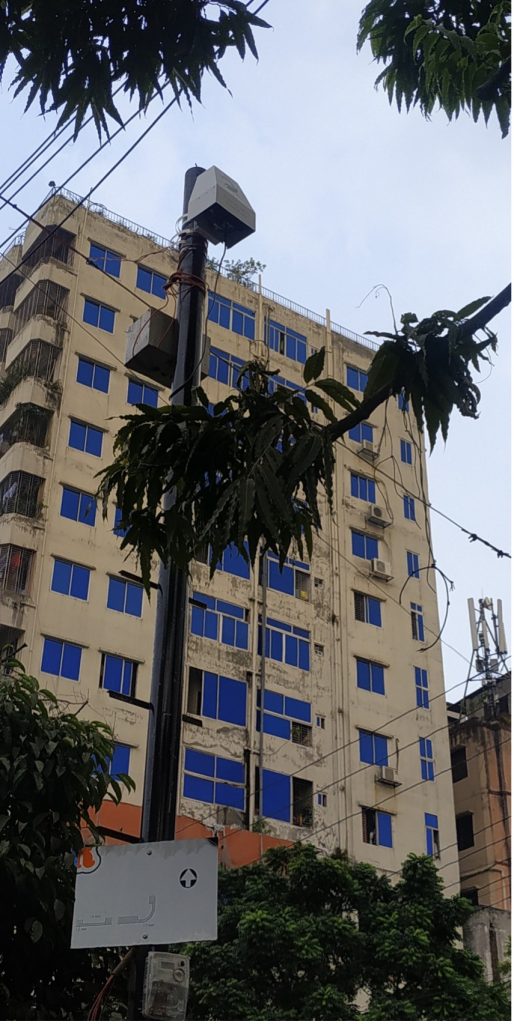
Colombia advances in the integration of climate change into National Urban Policies, with technical assistance from Urban-LEDS and UN-Habitat’s guiding frameworks
November 17, 2021
LEDS Lab closes in Colombia with projects installed in Topaga and Envigado
December 10, 2021In line with national priorities, the cities of Rajshahi and Narayanganj, have made significant strides towards advancing low emission and climate resilient development to bring down GHG emissions and reduce vulnerability to climate change with the support of the Urban-LEDS II project.


Bangladesh has one of the world’s highest urban population growth rates. With the burgeoning challenge of climate change, it is critical for the sustainable future growth of Bangladesh to develop climate-resilient and liveable cities. And it is all the more clear that cities will have a central role in the achievement of a country’s climate & sustainability targets. In line with national priorities, the cities of Rajshahi and Narayanganj, have made significant strides towards advancing low emission and climate-resilient development to bring down GHG emissions and reduce vulnerability to climate change with the support of the Urban-LEDS II project.
Rajshahi and Narayanganj, both model cities of the Urban-LEDS II project, became pioneering cities in Bangladesh to have their ‘first’ Climate Resilient City Action Plan (CRCAP). Through their CRCAPs, Rajshahi & Narayanganj now have a guiding framework to appropriately steer its socio-economic growth towards a low carbon urban development pathway and strengthen its resilience to climate change. The two CRCAPs set forth GHG emission reduction and adaptation goals for both cities over a five-year period up to 2026-27.
The city CRCAPs lists several key ‘structural’ and ‘enabling’ strategies spread across key urban sectors that provide a pathway for both the cities to enhance their climate resilience, addressing climate adaptation and mitigation in an integrated manner. These identified strategies will not only help reduce GHG emissions and better manage local climate risks but will also support the city in its Sustainable Development Goal (SDG) aspirations. Read the summary of the CRCAPs of Rajshahi and Narayanganj to learn more.
Rajshahi and Narayanganj developed their Greenhouse Gas Emissions Inventories (the base year 2017-18 & 2018-2019, respectively) and Climate Risk and Vulnerability assessments through the Urban-LEDS II project. These assessments along with continuous involvement and consultation with the cities’ Core Climate Committee formed the bedrock for the preparation of contextual and inclusive climate action plans.
While developing the action plans, both the cities also worked on conceptualizing and implementing innovative pilot projects. These pilot-scale implementations not only address key urban and climate challenges but also help advance the technical capacity of the municipal staff and increase public awareness.
In Narayanganj, three stationary sensor-based ambient air quality monitoring systems (AAQMS) with communication modules and data logging systems have been set up to help Narayanganj City Corporation (NCC) monitor air quality data in real-time at different locations in the city. A LED display board has also been installed near the NCC main administrative building to share air quality information and generate awareness within the community. NCC has also installed rooftop solar PV systems of 11.76 kWp capacity each at two public buildings with the support of ICLEI South Asia team. At the Ahammad Chunka Public Library and Auditorium building, a grid-tied rooftop solar PV system has been installed along with net-metering capability. While the second installation, a hybrid rooftop solar PV system with Lithium-ion batteries and net-metering has been set up at Healthcare Centre located at Bandar and will help provide back-up to key loads during frequent power outages encountered. Air quality and renewable energy deployment were identified by the cities’ Core Climate Committee as priority areas for pilot implementation.
At the same time, Rajshahi city wanted to focus its efforts on urban greening and biodiversity improvement. Through the support of the Urban-LEDS II project, the Rajshahi City Corporation (RCC) undertook several inter-connected activities to improve and better manage its open green spaces and create awareness of its biodiversity among citizens. A Natural asset map capturing Rajshahi’s natural resources has been completed. Also, GIS-based treemaps for selected locations have been prepared, to represent the spatial distribution of various tree species in the city. Thereupon, nearly 1800 trees at various locations have been labeled to improve public awareness and promote conservation. Finally, as a demonstration project, the plantation of over 1000 saplings of local and naturalized plant species, along 32 targeted slopes of Rajshahi’s Kolpona-Talaimari river embankment was successfully completed. Read more here.
To demonstrate the potential of and advocate for energy efficiency adoption, the city of Rajshahi has implemented a pilot project on undertaking a detailed energy audit and implementing energy improvement measures at the main administrative office building of the RCC. The priority energy efficiency interventions implemented include
- installation of LED lights in place of fluorescent lights for rooms, corridors, and lobbies
- retrofit of energy-efficient ceiling fans
- application of low emissivity film on windows on east and west facades to optimize solar heat gain
- installation of occupancy sensors for select lighting circuits
The leadership is shown by Rajshahi & Narayanganj to identify and evaluate their climate vulnerability and drivers of GHG emissions and to undertake evidence-based climate action planning & pilot implementation paves the way for other cities in Bangladesh to replicate these efforts and contribute to the achievement of the country’s NDC & SDG targets.

Grid-tied Rooftop solar PV system installed at Ali Ahammad Chunka Nagar Public Library, Narayanganj 
Pilot project on greening and biodiversity improvement through local and naturalised species planted along Rajshahi’s Kalpana-Talaimori river embankment
